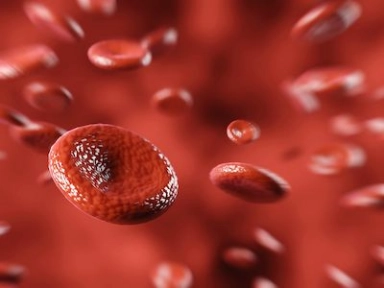Risk for Post-operative Venous Thromboembolism in Patients Receiving Enoxaparin Prophylaxis
Low anti-Factor Xa indicative of inadequate enoxaparin dosing is associated with a higher incidence of post-surgical Venous Thromboembolism.

Key Takeaway
- This study shows that among surgical patients receiving post-operative enoxaparin for venous thromboembolism (VTE) prevention, those having initial low vs in-range/high anti-Factor Xa (aFXa) were at significantly higher risk for 90-day post-operative VTE.
- High aFXa levels were not associated with 90-day clinically relevant bleeding (CRB) or major bleeding (MB).
Why This Matters
- Despite receiving chemical anticoagulation, surgical patients are at increased risk for “breakthrough” VTE.
- Moreover, surgical patients exhibit variable pharmacodynamic responses to enoxaparin, which are demonstrated by differences in aFXa levels, a marker of the extent of anticoagulation.
Study Design
- This is a pooled analysis of 8 clinical trials conducted at the University of Utah including 985 patients (mean age, 51.8 years) who underwent surgery and were receiving post-surgery prophylactic enoxaparin.
- Peak aFXa level in response to initial enoxaparin dosage was recorded in all patients, who were then followed up for 90 days.
- Following endpoints were evaluated:
- 90-day symptomatic VTE (symptomatic deep vein thrombosis [DVT], pulmonary embolus, portal vein thrombosis, inferior vena cava thrombosis and central venous catheter-associated DVT);
- CRB (requiring treatment change, including enoxaparin discontinuation, unexpected transfusion, interventional/bedside procedure, return to operating room and unexpected visit to emergency room); and
- MB (defined by the International Society of Thrombosis and Hemostasis).
- Funding: Plastic Surgery Foundation; others.
Key Results
- Included patients underwent reconstructive (n=507), thoracic (n=198), colorectal (n=116), orthopaedic (n=109) and trauma (n=55) surgeries.
- Among patients (n=376) receiving once-daily (OD) enoxaparin, 62.5%, 35.1% and 2.4% had low (<0.3 IU/mL), in-range (0.3-0.5 IU/mL) and high (>0.5 IU/mL) initial aFXa levels, respectively.
- Among patients (n=537) receiving twice-daily (BD) enoxaparin, 27%, 59% and 14% had low (<0.2 IU/mL), in-range (0.2-0.4 IU/mL) and high (>0.4 IU/mL) initial aFXa levels, respectively.
- Overall, 23 (2.3%) patients had 90-day VTE, with no differences observed in those receiving BD vs OD enoxaparin (2.6% vs 2.0%; P=0.67).
- Patients with initial low vs in-range/high aFXa levels had higher risk for VTE (4.2% vs 1.3%; logrank P=0.007).
- Initial low aFXa predicted VTE risk in patients receiving BD (6.2% vs 1.5%; logrank P=0.003) and not OD enoxaparin (3.0% vs 0.7%; logrank P=0.14).
- 41 (4.2%) and 21 (2.1%) patients had CRB and MB, respectively.
- Patients receiving BD vs OD enoxaparin were at higher risk for CRB (5.6% vs 2.2%; P=0.009) and MB (3.3% vs 0.5%; P=0.003).
- However, high aFXa vs low/in-range aFXa was not associated with 90-day CRB (4.8% vs 2.9%; logrank P=0.34) and MB (3.6% vs 1.6%; P=0.18).
Limitations
- Trials from only 1 institution were included.
- Low aFXa as a direct cause of VTE could not be proved.
- Day-to-day care may have been under-reflected.
- Real-time effects of enoxaparin dose adjustments on VTE were not assessed.
- Regression analysis was not performed.
- Possibility of high aFXa levels in patients who bled before enoxaparin reached a steady state was not investigated.
Reference
- Pannucci CJ, Fleming KI, Varghese TK, Stringham J, Huang LC, Pickron TB, Prazak AM, Bertolaccini C, Momeni A. Low anti-Factor Xa level predicts 90-day Symptomatic Venous Thromboembolism in Surgical Patients Receiving Enoxaparin Prophylaxis: A Pooled Analysis of Eight Clinical Trials. Ann Surg. 2020 Oct 19 [Epub ahead of print]. doi: 10.1097/SLA.0000000000004589. PMID: 33086312
Related articles
MAT-BH-2200241/v1/Mar 2022
.webp/jcr:content/jcr_content%20(16).webp)

